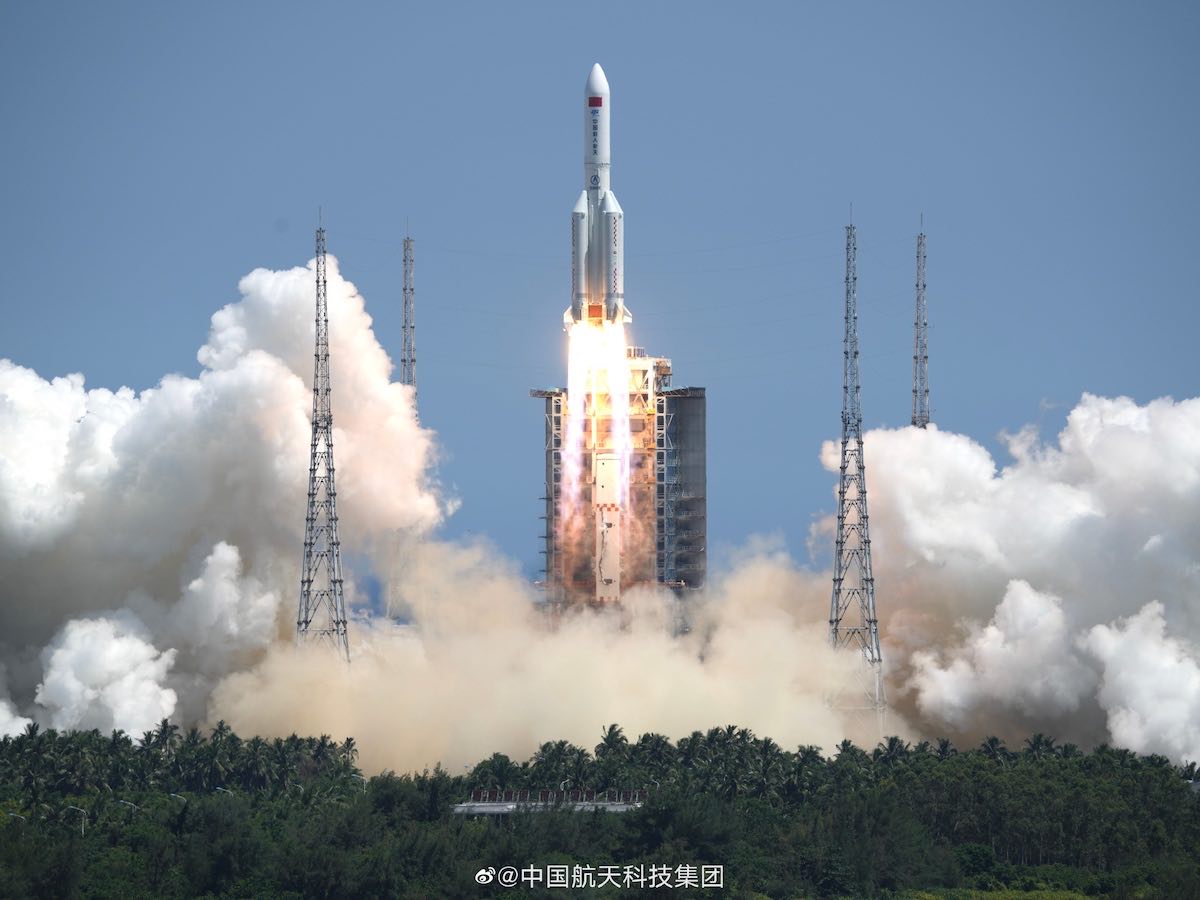On July 24, a successful launch of the Long March 5B heavy rocket took place from the Chinese Wenchang Cosmodrome. It sent the laboratory module “Wentian” into space. After entering orbit, Wentian used its propulsion system to perform a series of maneuvers. They allowed it to make a rendezvous and dock with the base unit of the Tiangong orbital station. Later, the Chinese authorities confirmed the successful implementation of the operation.
Characteristics and main tasks of the “Wentian” module
The laboratory module “Wentian” has a length of 17.9 meters, a diameter of 4.2 meters, and a mass of about 20 tons. It duplicates the control functions of the base unit of the station. The module is equipped with an airlock, scientific equipment and a robotic arm. It can support the accommodation of three Teikonauts.

Thanks to the new module, the Chinese orbital station will now be able to accommodate six people, which will allow changing crews directly in orbit and make it continuously habitable. “Wentian” will also be used for storage of supplies and will significantly expand the power capabilities of the station due to 30-meter solar panels.
In October of this year, the third compartment, the laboratory module “Mentian”, will be docked to the Chinese station. After that, it will take a T-shaped configuration. And at the end of 2023, the autonomous Xuntian telescope will go into space. It will be put into the same orbit as Tiangong, and from time to time it will dock with the station for refueling, maintenance and replacement of scientific instruments.
Fate of the first stage of the Long March 5B
After the mission to launch the Wentian, the central stage of the Long March 5B rocket also remained in Earth orbit. Its length is 30 meters, diameter — 5 meters, weight — 21 tons. In the coming weeks, it will make an uncontrolled descent from orbit. Taking into account the dimensions of the stage, some of its fragments will survive re-entry into the atmosphere. It is not known exactly where this will happen. But in any case, the central stage of Long March 5B will become one of the most massive artificial objects that will fall to Earth this century.

It is worth noting that in the past, the Chinese authorities have already been criticized by NASA for the lack of efforts to actively de-orbit and flood the upper stages of rockets in safe areas. Then the official representative of the Chinese Foreign Ministry, Wang Wenbin, said that this is a common world practice and the probability that the debris of the stage will cause some damage is extremely small.
According to https://spacenews.com
Follow us on Twitter to get the most interesting space news in time
https://twitter.com/ust_magazine
